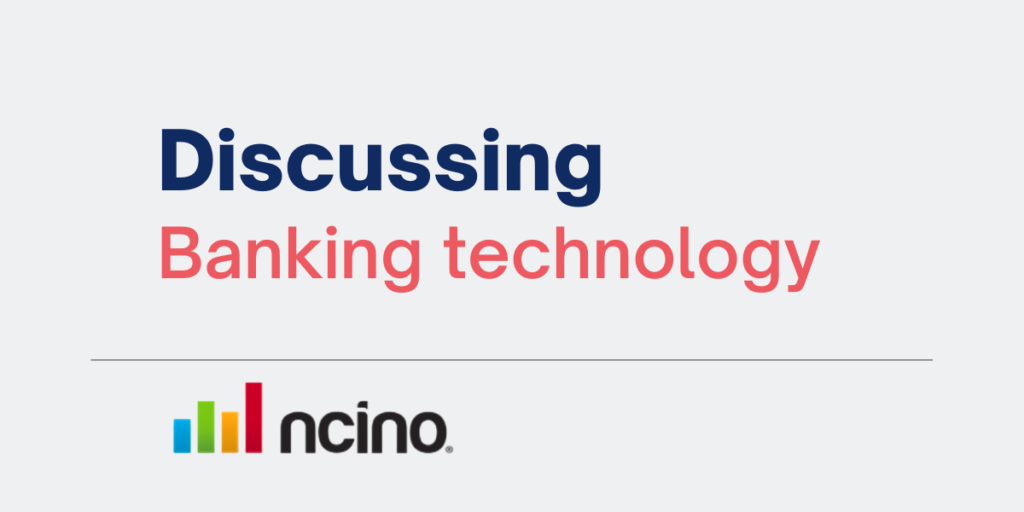Modern, cloud-based digital technology is necessary for financial institutions (FIs) that are seeking to differentiate their customer experience, improve internal operational effectiveness, streamline internal communications, and allow access to data across the enterprise. For years, the only option for creating differentiation in the market was for FIs to develop such technology in-house at great financial and resource expense. But today, FIs have a better option: the ability to buy technology and implement it quickly, cost-effectively, and more efficiently than they could on their own.
The shifting sands behind buy vs build strategies
Digital technology has evolved to become both the primary mode of differentiation, as well as the means of levelling the playing field for FIs of all sizes. At one time, FIs had little choice but to design and build their own differentiated technology solutions such as loan origination systems in-house to meet these needs. As demand has grown for digital interactions and more efficient, streamlined back-office processes, the quality of solutions and third-party vendors has improved markedly. With this evolving landscape as a backdrop, the case for buying your digital future versus building in-house is more compelling than ever.
The challenge of digital transformation
Financial institutions are struggling. While large enterprise banks are endowed with the resources and capacity to build some (but not all) of their technology in-house, and smaller FIs have been accustomed to outsourcing their technology stack for years, midsize institutions are seemingly stuck in the middle. But today, wading in slowly is no longer an option. Customer expectations are changing rapidly, particularly in the wake of the pandemic, which started in 2020 and has driven consumers of all types to embrace digital interactions and value the speed and convenience of “anytime, anywhere” banking.
The hidden costs of building in-house
One option for tackling the digital transformation challenge is to build bespoke technology and digital capabilities in-house. While this approach seems to offer certain benefits, such as greater control over the implementation of desired functionality and the ability to add new, fully customized capabilities over time, there are a host of hidden costs involved such as: House foundation, which must be built first; Hiring, developing, and retaining talent; Rapid obsolescence; Cost of continued innovation; and inevitable cost overruns.
The benefits of buy
Today, FIs have multiple options when it comes to implementing and adopting digital capabilities. By taking a buy approach, FIs can benefit from these cutting-edge capabilities quickly, and apply them to solving issues and market demands. They also can typically take advantage of these breakthrough technologies without having to hire subject-matter experts, who are in short supply. Vendors have laid all the complex groundwork through their productization processes.
Choosing to buy next-generation banking solutions will also help you achieve return on investment (ROI) more quickly because implementation cycles have become significantly shorter than building the same functionality in-house. Benefits of efficiencies and cost savings, or a boost in sales growth and revenues come sooner and allow reinvestment into enhancement and growth.
Buy AND build?
When taking a buy path, there are some unique situations in which in-house development of your digital capabilities can make sense. One such scenario is when the specific capabilities you want or need are not presently available on the market—take loan origination software as an example. Also, if your institution’s driving principle is to innovate or disrupt the market through technology, you may choose to build some of your capabilities. Even then, it is very common to need to buy new tooling and enable capabilities to support the in-house effort.
Learnings from the buy vs build trenches
One institution that chosen the buy path is Citadele Bank. Understanding the need to use modern technology to enhance the client and employee experience, Citadele replaced several legacy systems and adopted a truly digital lending platform with greater visibility at all stages of the loan process. Using nCino’s single cloud-based platform, Citadele has been able to navigate Corporate and SME clients’ loan journeys and replace manual, repetitive employee tasks resulting in more meaningful interactions with clients quickly and efficiently.
Hear more about Citadele’s digital transformation journey at the Nordic Fintech Summit.
 Writer Jaakko Vilén has been working in the banking digitalization since 2004, first as an ebanking developer and then in various other roles, including the mobile banking rise in early 2010’s. Now he is the RVP at nCino: cloud-based Bank Operating System serving over 1200 financial institutions around the globe.
Writer Jaakko Vilén has been working in the banking digitalization since 2004, first as an ebanking developer and then in various other roles, including the mobile banking rise in early 2010’s. Now he is the RVP at nCino: cloud-based Bank Operating System serving over 1200 financial institutions around the globe.



